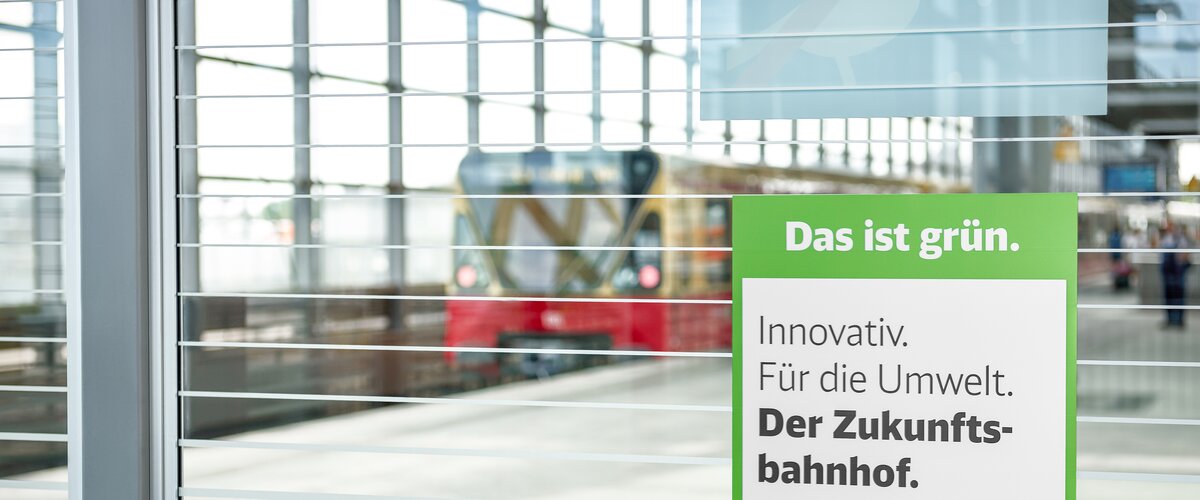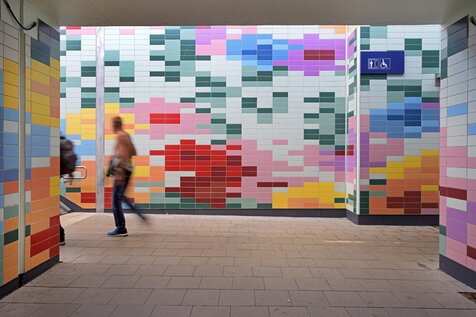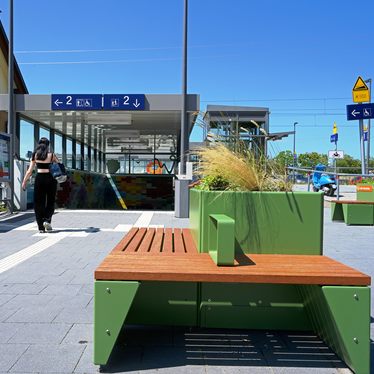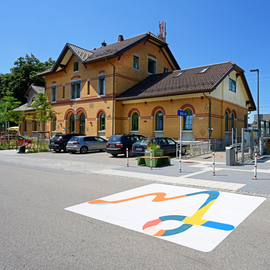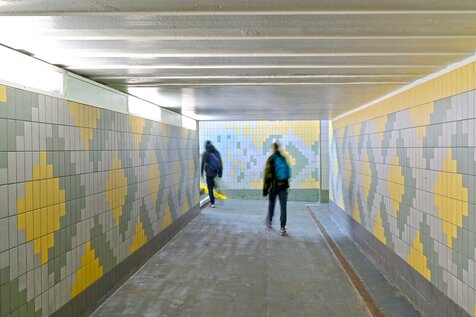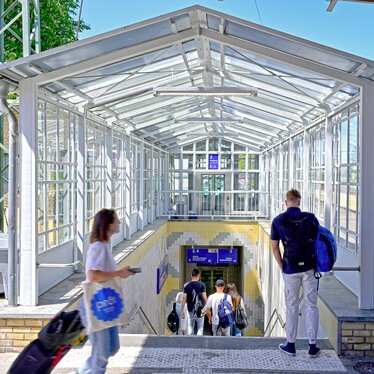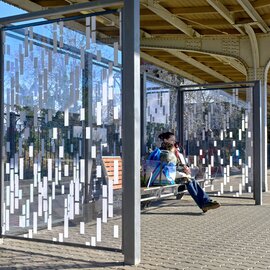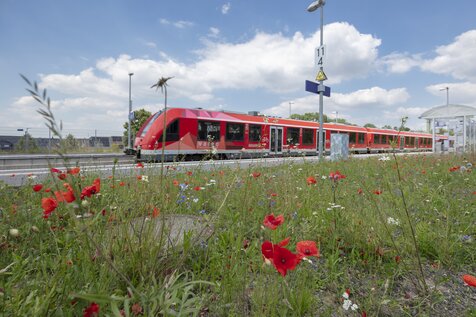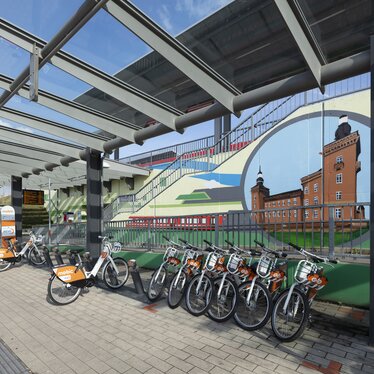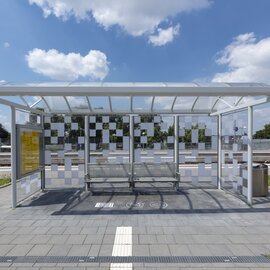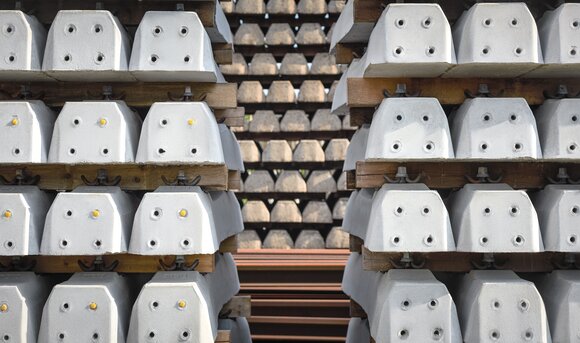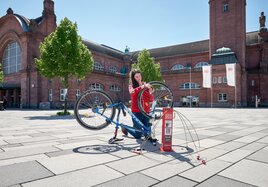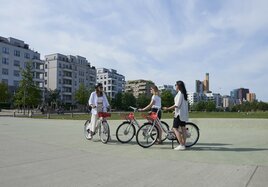As a climate-friendly mobility provider, Deutsche Bahn plays a key role in the sustainable decarbonization of transport. Several million passengers already travel on DB's trains and at its stations every day. In order to get as many people as possible excited about rail travel in the long term, it is necessary to adapt the infrastructure to the needs of travelers.
With the stations of the future, Deutsche Bahn is completely rethinking the station infrastructure of tomorrow: the focus is on a holistic approach - from the transport station to the reception building and the station forecourt to onward travel. Demand-oriented and sustainable offers are intended to make stations viable for the future.
Every station of the future must fulfill a number of core characteristics:
customer-oriented
For greater customer orientation, DB designs stations to be inviting and attractive so that travelers feel safe and comfortable there. Among other things, this includes bright entrances, inviting common areas and step-free accessibility to the platform to make it as accessible as possible. This makes the station an appealing starting, transition or end point of a journey.
high-perfomance
Deutsche Bahn also wants to enhance the performance of its stations for more travelers. The capacity of stations is being increased through targeted measures. For example, a new organization system provides an overview and creates space for a better distribution of passengers on the tracks.
sustainable
Deutsche Bahn has also firmly established the sustainable design of construction and operation as a core element of the stations of the future.
DB is working in partnership with the federal states, cities and local authorities to improve onward travel and create an attractive station environment. In particular, it is driving forward the expansion of bicycle parking and shared mobility at stations and is committed to climate-resilient areas around stations. To this end, it has launched a new competence center for station forecourts and onward travel, which supports cities and municipalities as a partner.
113
stations of the future
in the year 2024
By 2024, Deutsche Bahn has developed 113 stations into stations of the future. A further 100 are to be added every year until 2027.
Sustainability as a central guiding principle of the stations of the future
In order to fulfill the target image of a station of the future, DB has defined corresponding quality specifications and standards based on market research data and specific customer satisfaction surveys. These were broken down for the different station types. A systematic comparison of the target/actual status for each standard and station shows where action is needed for improvements, which are then brought together in station plans as a basis for implementation. The sustainability performance element was developed as a central component of these standards.
Use of photovoltaics
At each future station, DB examines whether it is technically and economically feasible to install photovoltaic systems. If feasible, these can be installed either on reception buildings or on newly built or refurbished platform roofs and enable a climate-friendly energy supply.
Energy-efficient LED lighting
DB is also retrofitting the lighting systems with energy-efficient LED lighting. This not only reduces electricity consumption, but also extends the service life of the light sources and reduces material consumption.
Climate-friendly heat supply
In order to reduce greenhouse gas emissions in the heat supply, Deutsche Bahn is replacing old heating systems, switching from fossil fuels and increasingly relying on renewable energies, for example through heat pumps, (green) district heating or waste heat recovery. In this way, Deutsche Bahn is making sustainability an integral part of the stations of the future and thus making a valuable contribution to climate protection.
Vibrant variety of colors in Wangen (Allgäu)
The region around Wangen in Allgäu is characterized by colourful meadows with native plants such as cornflowers and bluebells, especially in summer. The tiles in the redesigned pedestrian underpass now reflect the diversity of the local Allgäu landscape. On the station forecourt, newly planted trees, open space kits with planter boxes and newly arranged parking spaces create a harmonious overall picture.
More quality of stay in Werder (Havel)
As the first future station developed in 2024, Werder (Havel) station in Brandenburg succeeds in combining history and modernity in its design. Deutsche Bahn has complemented the listed architecture with contemporary design elements reminiscent of regional brick production. Sustainable lighting, green seating areas and modernized platforms create an inviting ambience.
Modern mobility hub Erftstadt
In Erftstadt in North Rhine-Westphalia, Deutsche Bahn is bringing nature directly to the station of the future: extensive renaturation measures have transformed many fallow areas around the station into wildflower meadows. A new bicycle parking garage, plenty of parking spaces and an attractive station forecourt with plumbing and gas systems and a kiosk also make the station a real mobility hub.
Pilot phase gets stations of the future rolling
During a pilot phase from 2019 to 2021, Deutsche Bahn worked with partners from business, science and local authorities to renovate 16 stations across Germany and test innovative concepts. The aim was to find new ways of making stations not only more functional and customer-friendly, but also more sustainable. The aim was to noticeably increase passenger satisfaction and create sustainable services at the same time.
The measures tested during the pilot phase included new passenger information systems, new energy concepts and an improved cycling infrastructure around the stations. The results have shown that there was a significant improvement in customer satisfaction at all pilot locations and, despite regional characteristics, each station was given a unique quality of stay. This successful test phase laid the foundation for the new standardized concept of the stations of the future.
